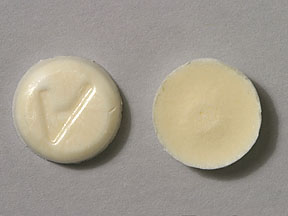Zelapar Disease Interactions
There are 11 disease interactions with Zelapar (selegiline).
- Major psychotic disorders
- Severe renal dysfunction
- Hypotension
- Hypotension
- Cardiac disease
- Glaucoma
- Hypertension
- Liver disease
- Melanoma
- Sleep disorders
- Urinary retention
Selegiline (applies to Zelapar) major psychotic disorders
Major Potential Hazard, Moderate plausibility. Applicable conditions: Psychosis
Patients with major psychotic disorders should ordinarily not be treated with selegiline because of the risk of exacerbating psychosis.
Selegiline (applies to Zelapar) severe renal dysfunction
Major Potential Hazard, Moderate plausibility.
Small increments in serum BUN and creatinine have been observed in patients treated with high dose of selegiline. Treatment with selegiline is not recommended in patients with severe renal impairment and end-stage renal disease (CrCl <30 mL/min).
Dopamine agonists (applies to Zelapar) hypotension
Moderate Potential Hazard, Moderate plausibility.
Dopamine agonists may impair the systemic regulation of blood pressure, with resultant orthostatic hypotension at any time, but especially during dose escalation. Additionally, patients with Parkinson's disease may have an impaired capacity to respond to an orthostatic challenge. For these reasons, patients with Parkinson's disease (or restless legs syndrome) who are being treated with dopaminergic agonists typically require careful monitoring for signs/symptoms of orthostatic hypotension, especially during dose escalation, and should be advised of this risk.
Monoamine oxidase inhibitors (applies to Zelapar) hypotension
Moderate Potential Hazard, Moderate plausibility.
Hypotension has been observed during therapy with monoamine oxidase inhibitors. These drugs should be used with caution, especially in patients with tendency towards hypotension or taking other drugs known to cause hypotension.
Selegiline (applies to Zelapar) cardiac disease
Moderate Potential Hazard, Moderate plausibility. Applicable conditions: Cardiovascular Disease
The use of selegiline has been associated with cardiovascular events such as tachycardia, bradycardia, syncope, hypertension, hypotension, arrhythmias, and aggravation of angina pectoris. Therapy with selegiline should be administered cautiously in patients with cardiac disease.
Selegiline (applies to Zelapar) glaucoma
Moderate Potential Hazard, Moderate plausibility. Applicable conditions: Glaucoma/Intraocular Hypertension
The use of selegiline may exacerbate glaucoma. Therapy with selegiline should be administered cautiously in patients with glaucoma.
Selegiline (applies to Zelapar) hypertension
Moderate Potential Hazard, Moderate plausibility.
Selegiline can cause hypertensive reactions and it should be used with caution in patients with hypertension. Patients should report any symptoms such as occipital headache, palpitations, neck stiffness or soreness, nausea, sweating, dilated pupils and photophobia. Patients receiving therapy need to have monitored their blood pressure frequently to detect any evidence of pressor response. Additionally, patients should be advised to avoid foods and drinks with high tyramine content such as cheese, sour cream, beer, liver, bananas and others, as these might trigger a hypertensive crisis.
Selegiline (applies to Zelapar) liver disease
Moderate Potential Hazard, Moderate plausibility.
Patients with mild to moderate hepatic impairment (Child-Pugh 5 to 9), may require a dose reduction of selegiline depending on their clinical response. Selegiline is not recommended in patients with severe hepatic impairment (Child-Pugh >9).
Selegiline (applies to Zelapar) melanoma
Moderate Potential Hazard, Moderate plausibility. Applicable conditions: Skin Cancer
Patients with Parkinson's disease have a higher risk of developing melanoma than the general population. Patients and providers should be advised to monitor for melanoma frequently and regularly when using selegiline. Skin examinations should be performed by qualified individuals (e.g., dermatologists).
Selegiline (applies to Zelapar) sleep disorders
Moderate Potential Hazard, Moderate plausibility.
Selegiline should be used with caution in patients with sleep disorders as it can cause somnolence. Patients should exercise caution when driving, operating machines, or working at heights during treatment. Treatment should be discontinued if patients develop daytime sleepiness with episodes of falling asleep during activities such as conversation, eating, etc. If not discontinued, patients should be very cautious about the activities that they engage in that could be potentially dangerous. Prescribers should question the patients specifically about somnolence, as it is rarely reported by patients, and ask about sleep disorders and the use of concomitant sedating medications.
Selegiline (applies to Zelapar) urinary retention
Moderate Potential Hazard, Moderate plausibility.
The use of selegiline may exacerbate urinary retention. Therapy with selegiline should be administered cautiously in patients with urinary retention or obstruction.
Switch to professional interaction data
Zelapar drug interactions
There are 521 drug interactions with Zelapar (selegiline).
Zelapar alcohol/food interactions
There are 3 alcohol/food interactions with Zelapar (selegiline).
More about Zelapar (selegiline)
- Zelapar consumer information
- Check interactions
- Compare alternatives
- Pricing & coupons
- Reviews (3)
- Drug images
- Side effects
- Dosage information
- During pregnancy
- FDA approval history
- Drug class: dopaminergic antiparkinsonism agents
- Breastfeeding
- En español
Related treatment guides
Drug Interaction Classification
| Highly clinically significant. Avoid combinations; the risk of the interaction outweighs the benefit. | |
| Moderately clinically significant. Usually avoid combinations; use it only under special circumstances. | |
| Minimally clinically significant. Minimize risk; assess risk and consider an alternative drug, take steps to circumvent the interaction risk and/or institute a monitoring plan. | |
| No interaction information available. |
See also:
Further information
Always consult your healthcare provider to ensure the information displayed on this page applies to your personal circumstances.


